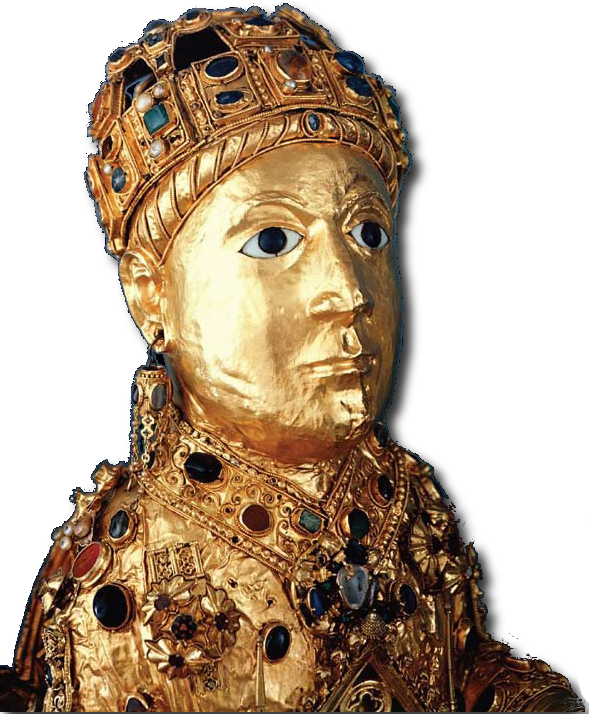 |
MedievalEuropeOnline
the web home of Medieval Europe: A
Short History
|
Chapter 4: Carolingian Europe, c. 700-850
ONLINE RESOURCES:
Medieval Writing (a friendly guide to Caroline miniscule and other scripts)
Plan of the Monastery of St Gall
TEST YOURSELF: Have you read Chapter 4 adequately? Test yourself here.
MAPS: Want to download a map from chapter 4? Click here.
TIMELINES: Want to download a timeline from chapter 4? Click here.
CITATIONS: Want to find the source of a quote used in chapter 4? Click here.
HISTORICAL STUDIES:
Roger Collins, Charlemagne (1998). A traditional approach that is up-to-date on research. Se also Rosamond McKitterick, Charlemagne: The Formation of a European Identity (2008).
Marios Costambeys, Matthew Innes, and Simon MacLean, The Carolingian World (2011). A new, lucid survey.
William J. Diebold, Word and Image: An Introduction to Early Medieval Art (2000). Brief, clear, and richly illustrated.
Eleanor Shipley Duckett, Carolingian Portraits: A Study in the
Ninth Century (1962). Walafrid Strabo’s biographical portrait
has been adapted from this lively collection.
Paul Edward Dutton, Charlemagne's Mustache and Other Cultural
Clusters of a Dark Age (2004). Highly readable, erudite essays
about aspects of Charlemagne and his court.
Richard Hodges and David Whitehouse, Mohammed, Charlemagne, and
the Origins of Europe: Archaeology and the Pirenne Thesis (1983).
Uses archaeology to reexamine the Carolingian economy. See also
Georges Duby, The Early Growth of the European Economy: Warriors
and Peasants from the Seventh to the Twelfth Century (1974).
Janet L. Nelson, The Frankish World (1996). A collection
of essays by a leading authority. See also her Politics and
Ritual in Early Medieval Europe (1986).
Thomas F. X. Noble, The Republic of St. Peter: The Birth of the
Papal State 680–825 (1984). A lucid study.
Timothy Reuter, Germany in the Early Middle Ages,
800–1056 (1991). An excellent account with an interesting
reinterpretation of Charlemagne.
Richard E. Sullivan, ed., The Gentle Voices of Teachers: Aspects
of Learning in the Carolingian Age (1995). See also Rosamond
McKitterick, ed., Carolingian Culture: Emulation and Innovation (1994).
Pierre Riché, The Carolingians: A Family Who Forged Europe (1993). A lively study, translated from French. See also his Daily Life in the World of Charlemagne (1978), and Rosamond McKitterick, The Frankish Kingdoms under the Carolingians, 751–987 (1983).
PRIMARY SOURCES IN PRINT:
Paul Edward Dutton, ed., Carolingian Civilization: A Reader (1993).
A wide-ranging collection of sources, each carefully introduced. See
also his Charlemagne’s Courtier: The Complete Einhard (1998).
Carol Neel, trans., Handbook for William: A Carolingian Woman’s Counsel for Her Son (1991). A translation of Dhuoda’s Liber Manualis.
Thomas F.X. Noble, trans., Charlemagne and Louis the Pious: The
Lives by Einhard, Notker, Ermoldus, Thegan, and the Astronome
(2009).
These listings are works-in-progress. They are highly selective and aimed at the practical needs of students and teachers. If you have suggestions, please send them to Judith Bennett.